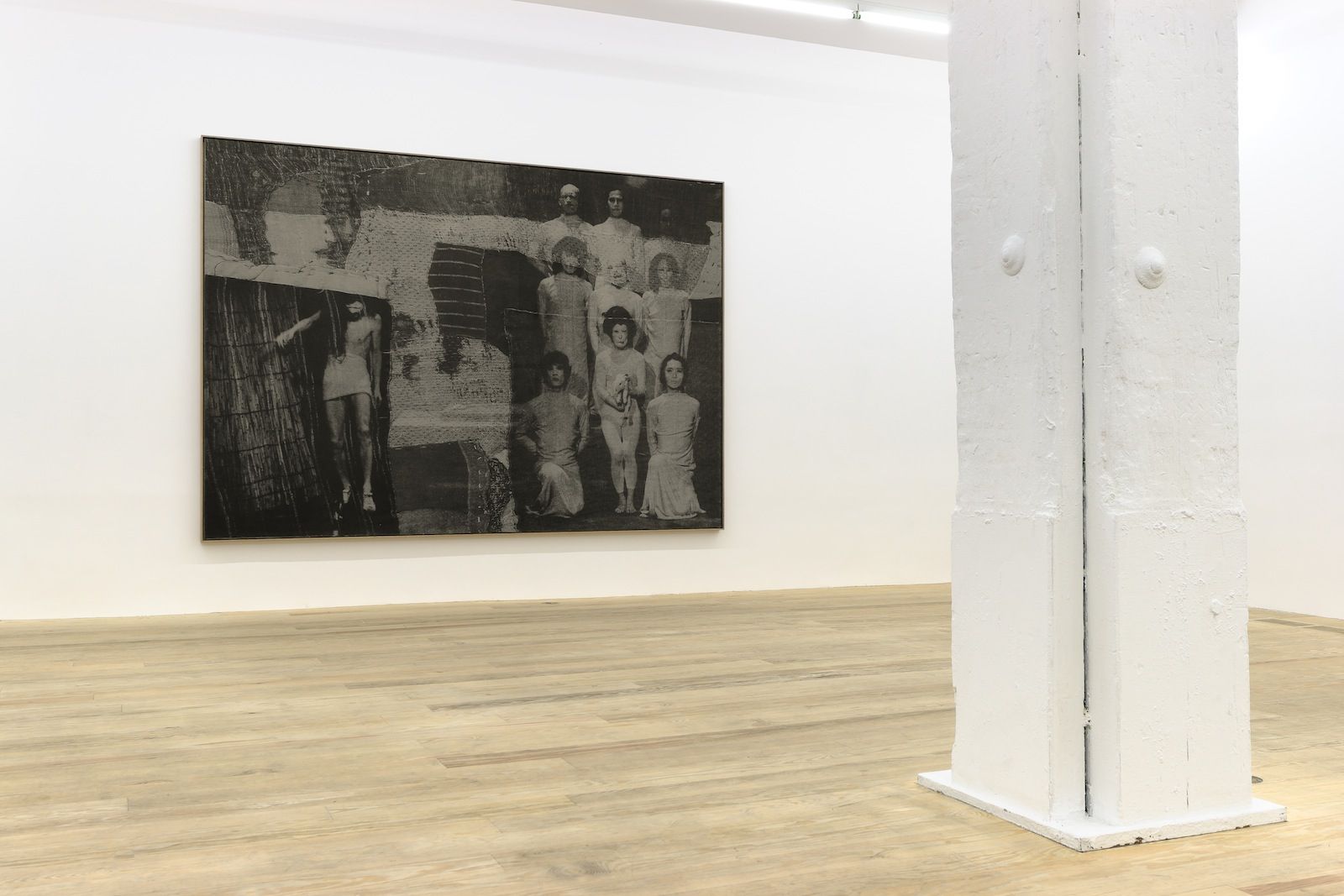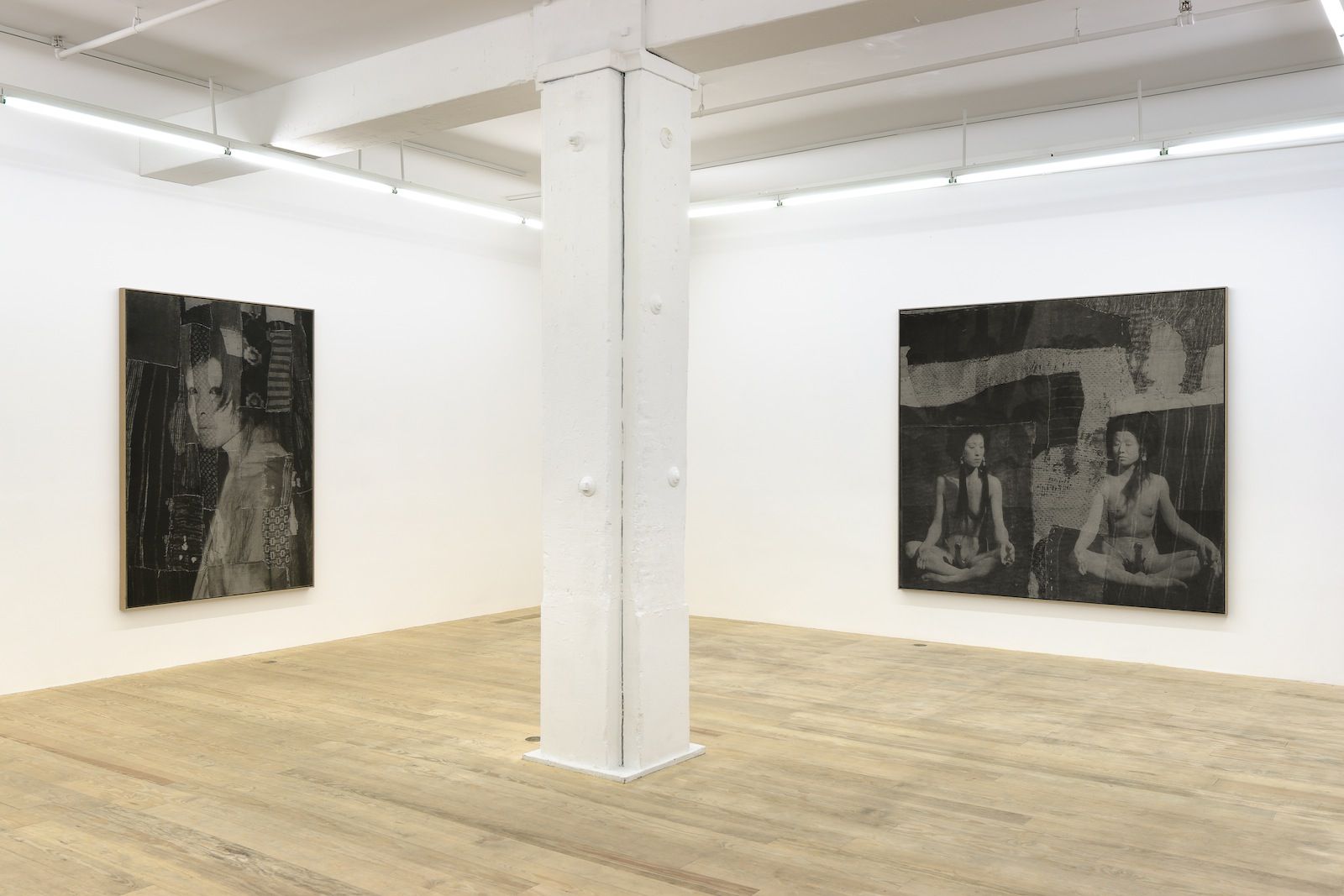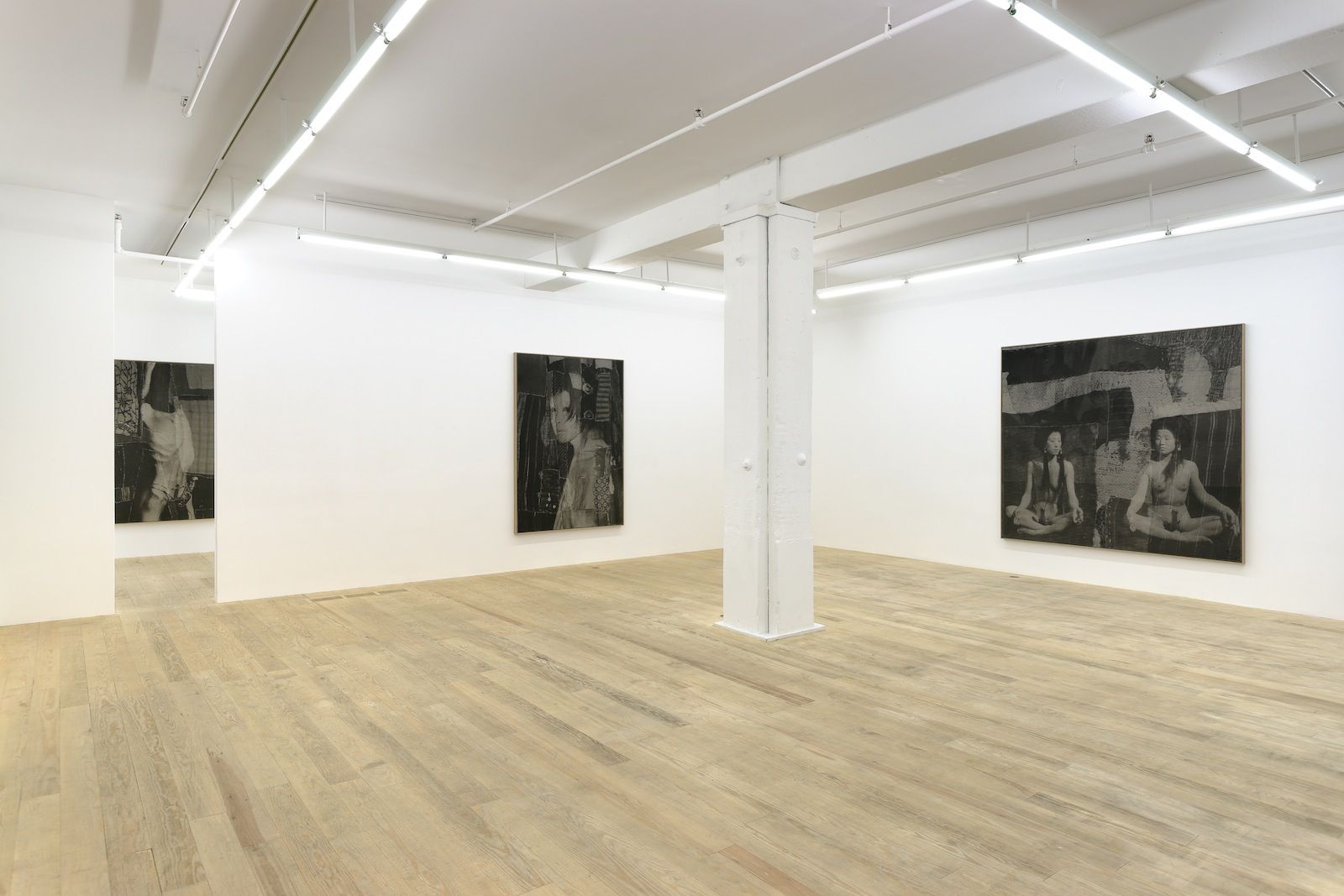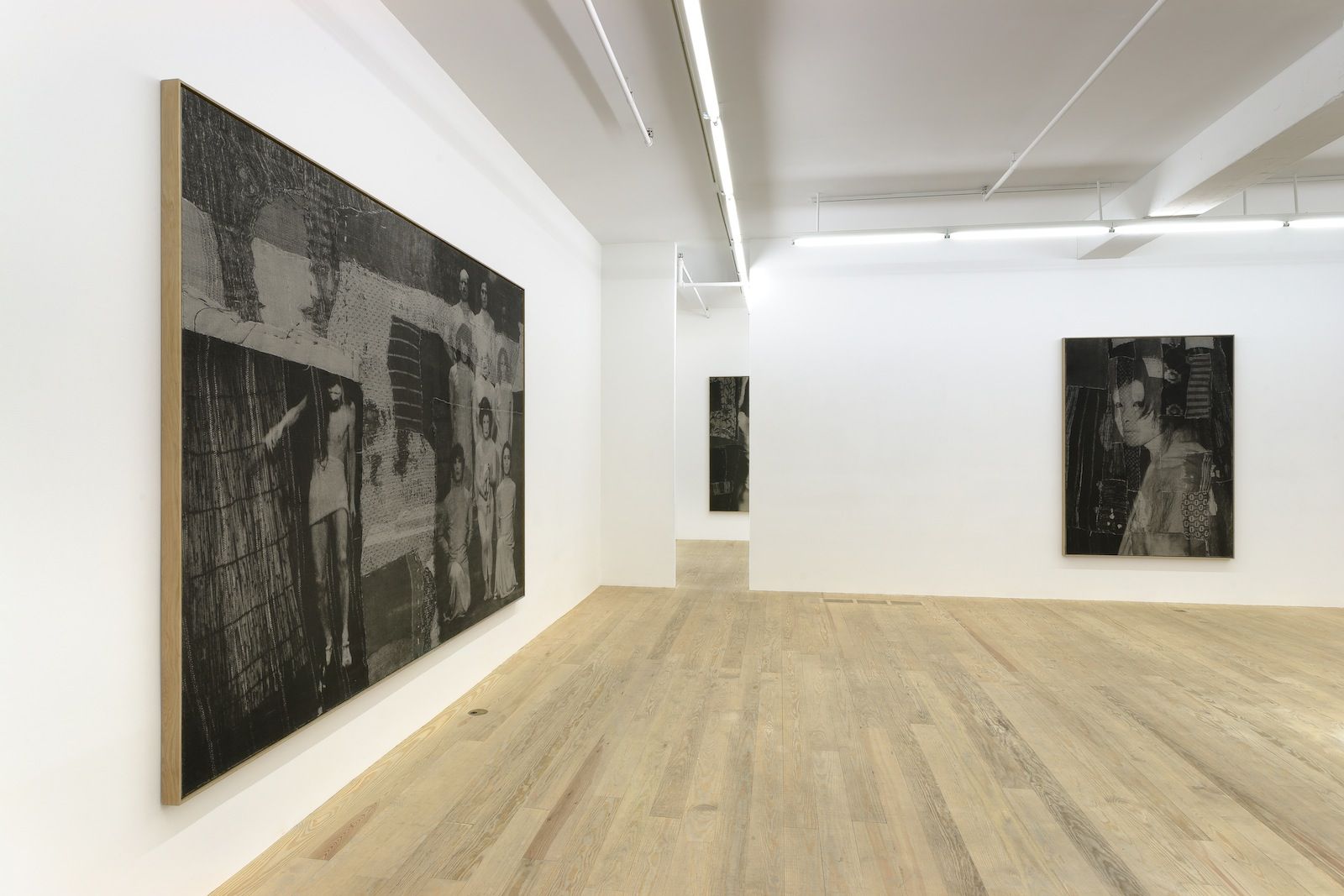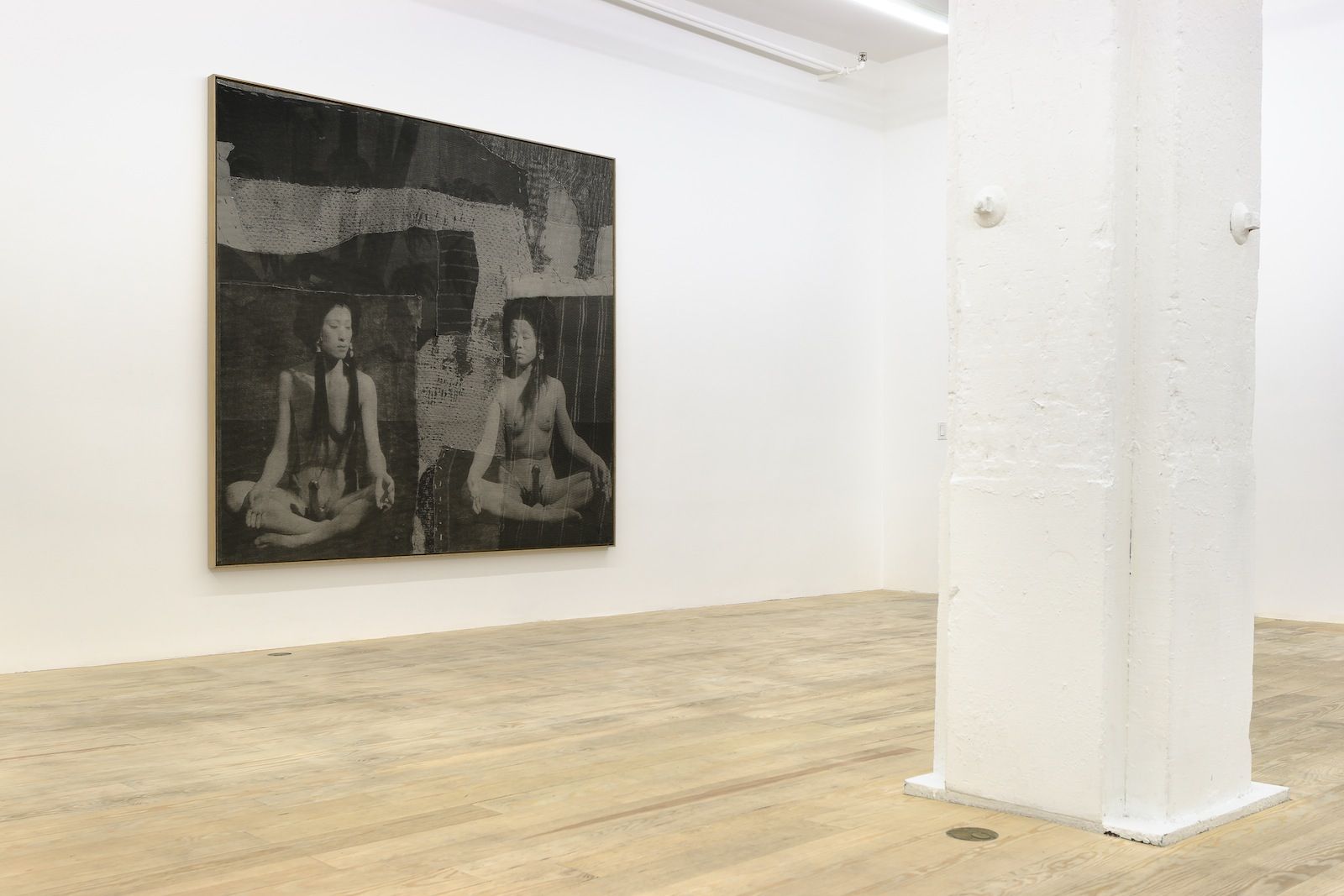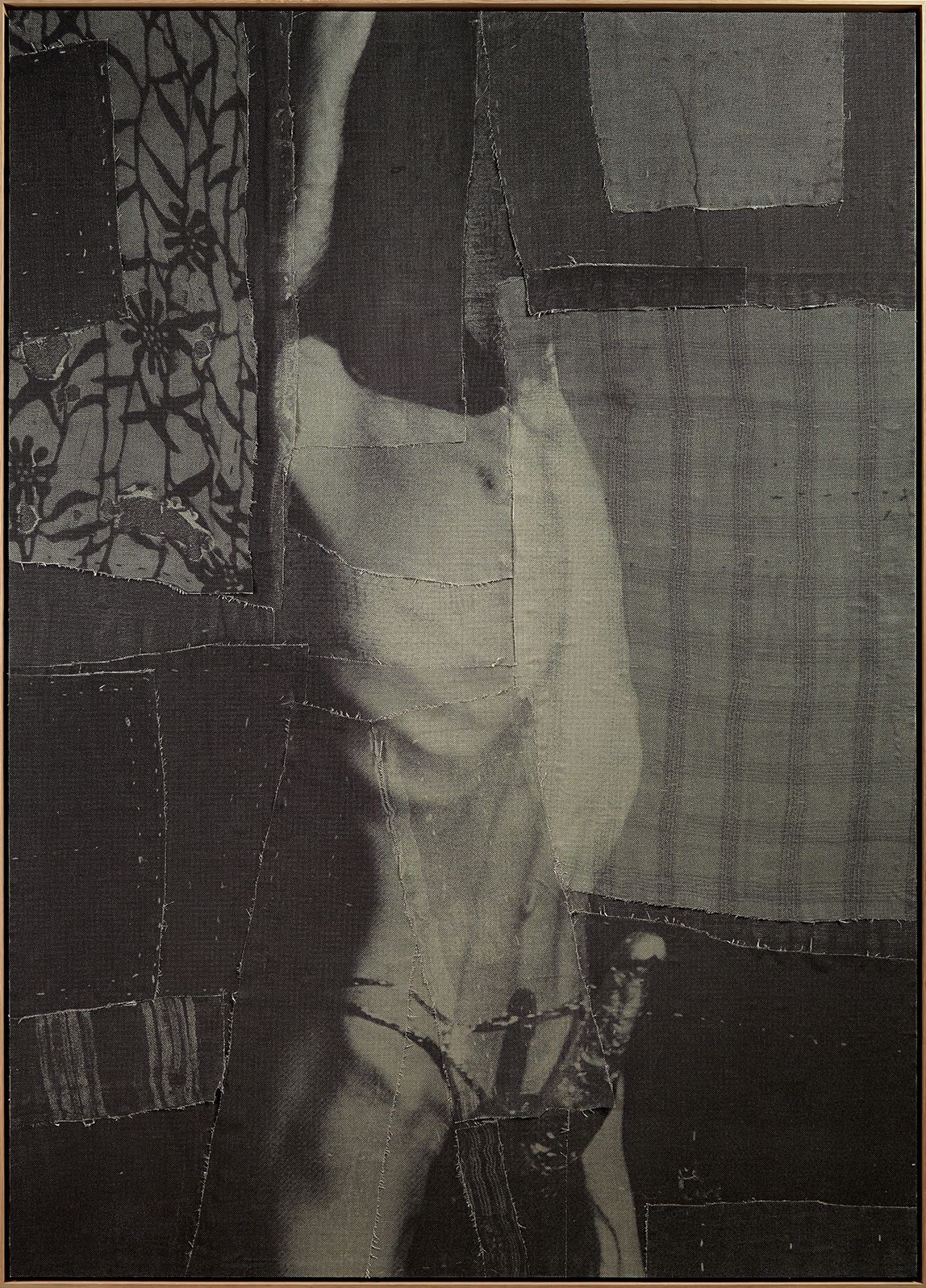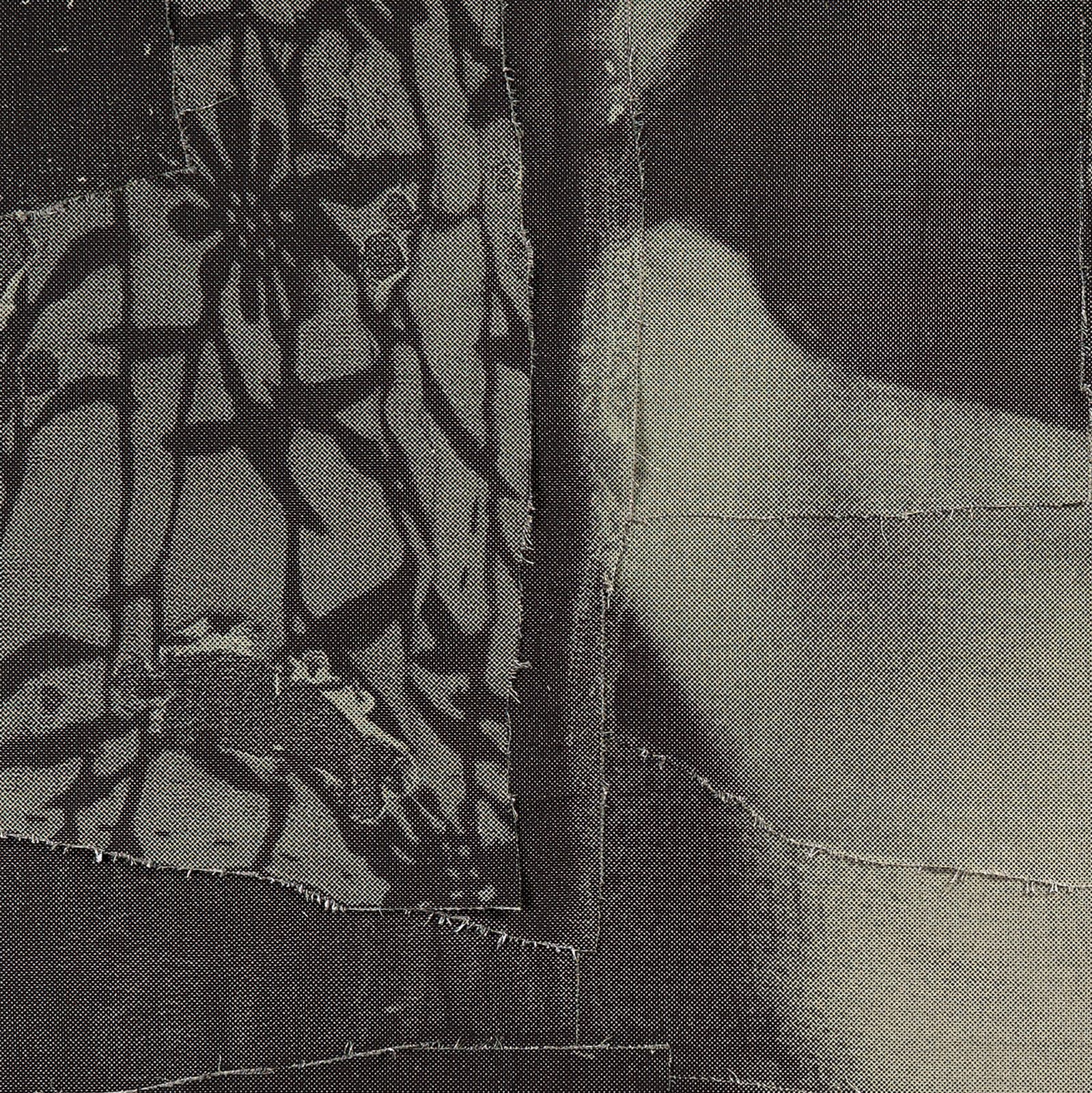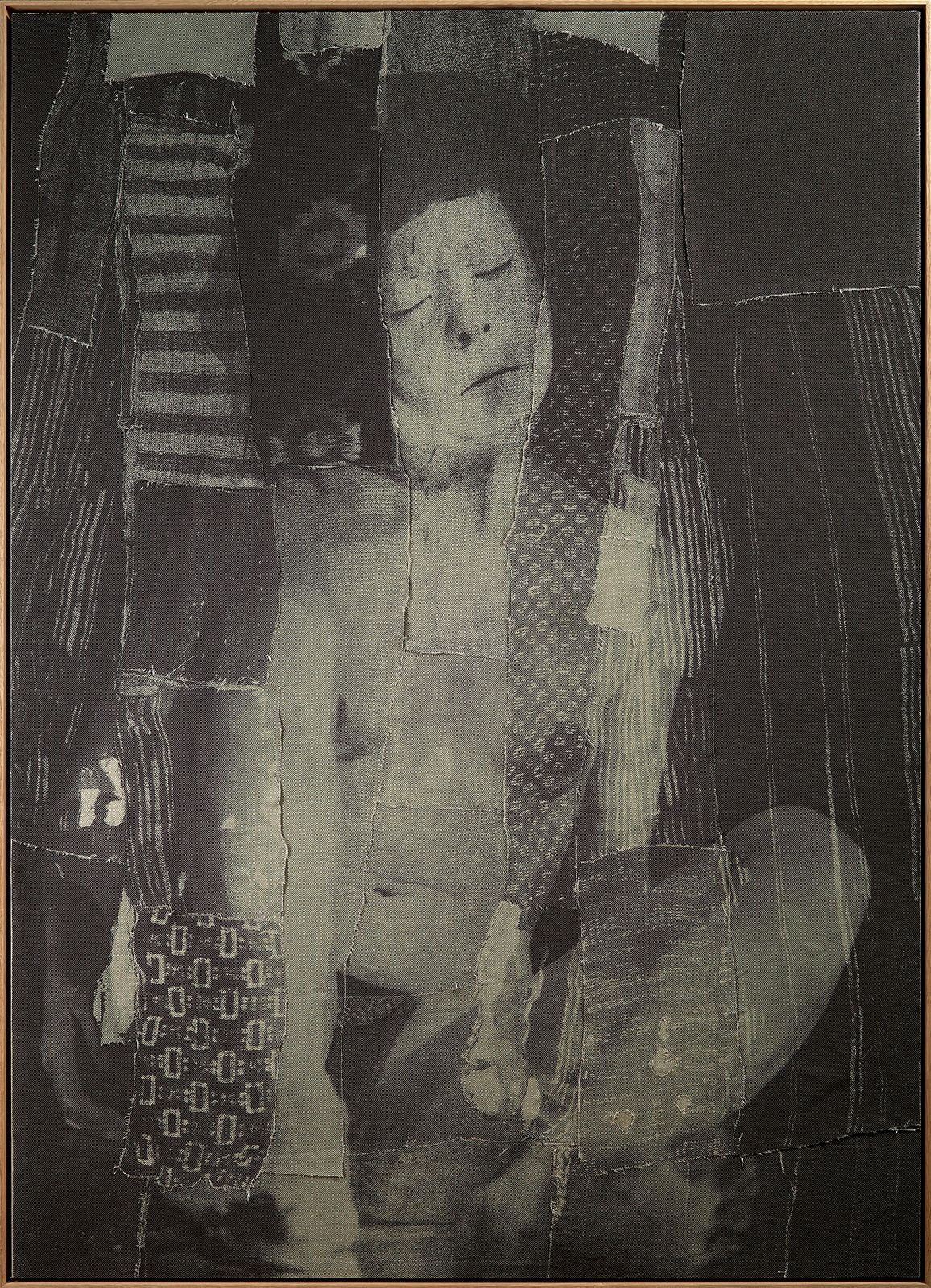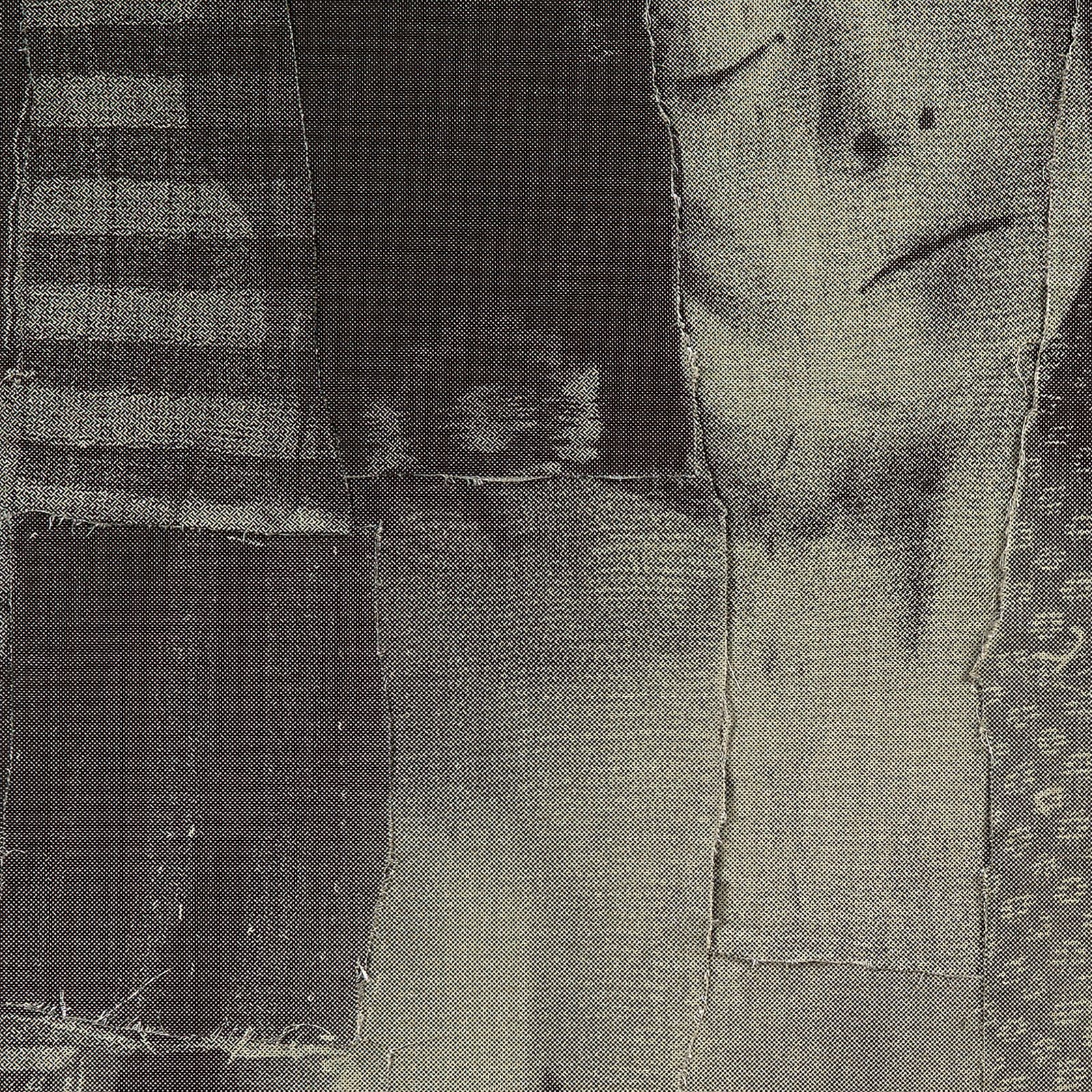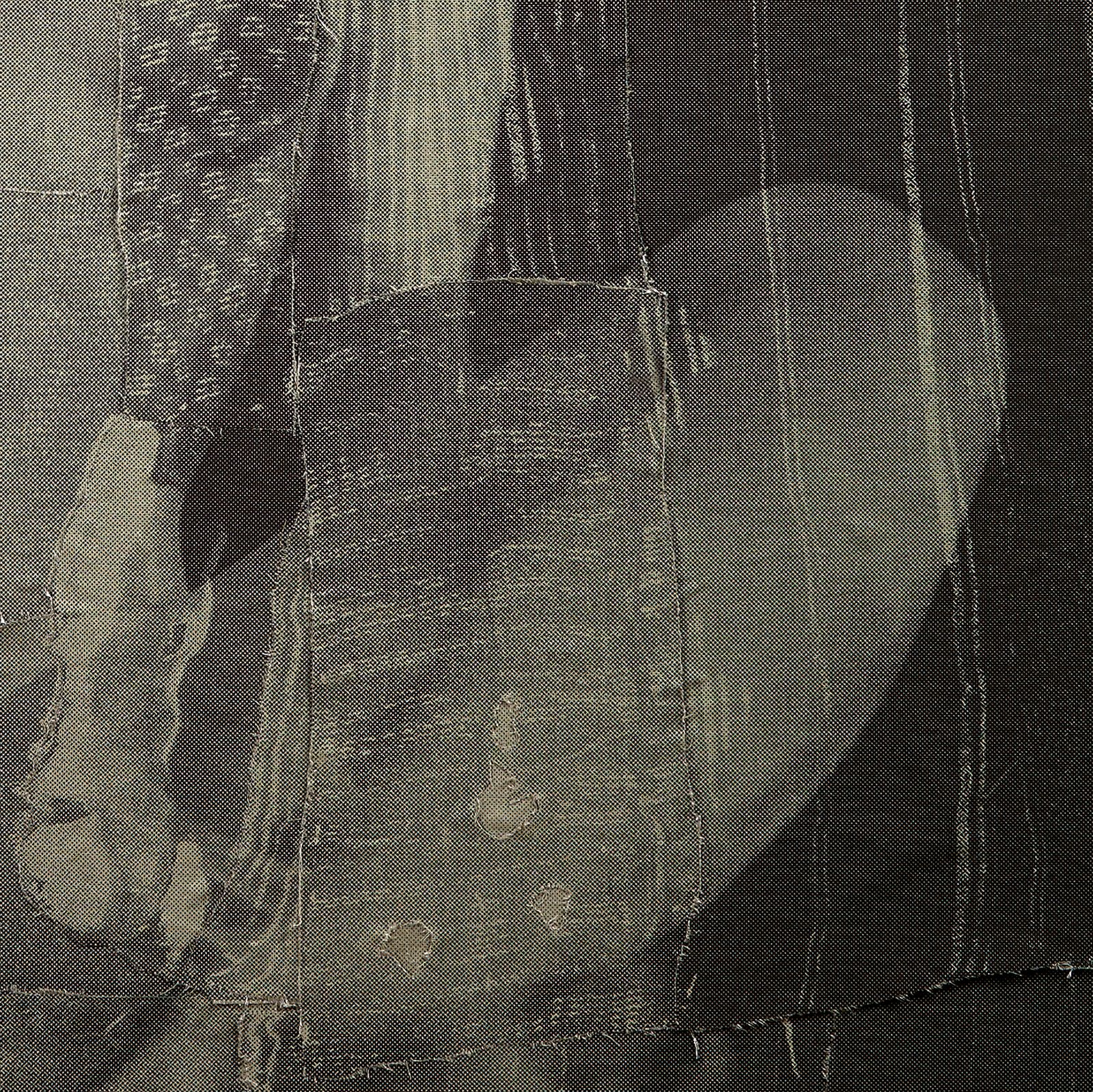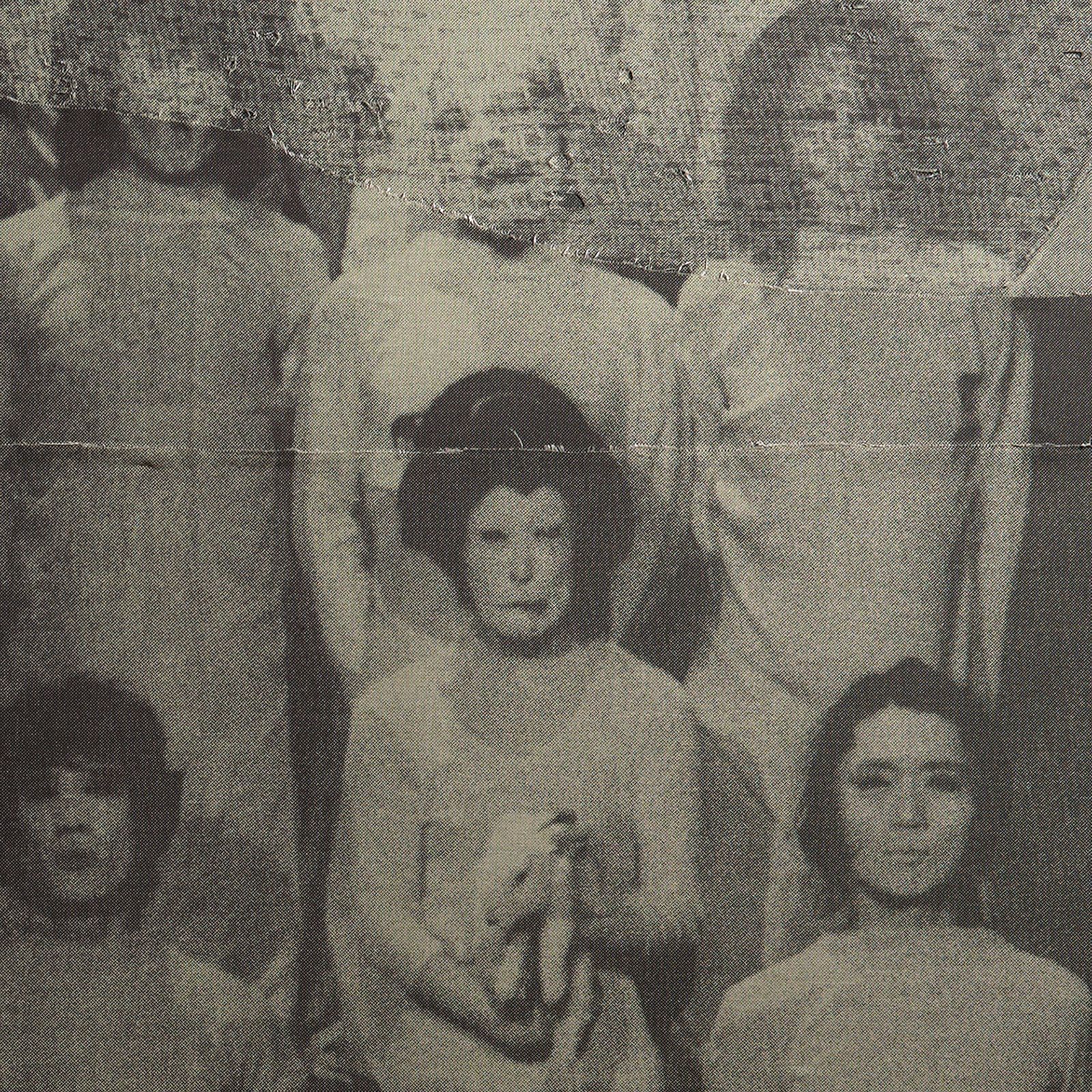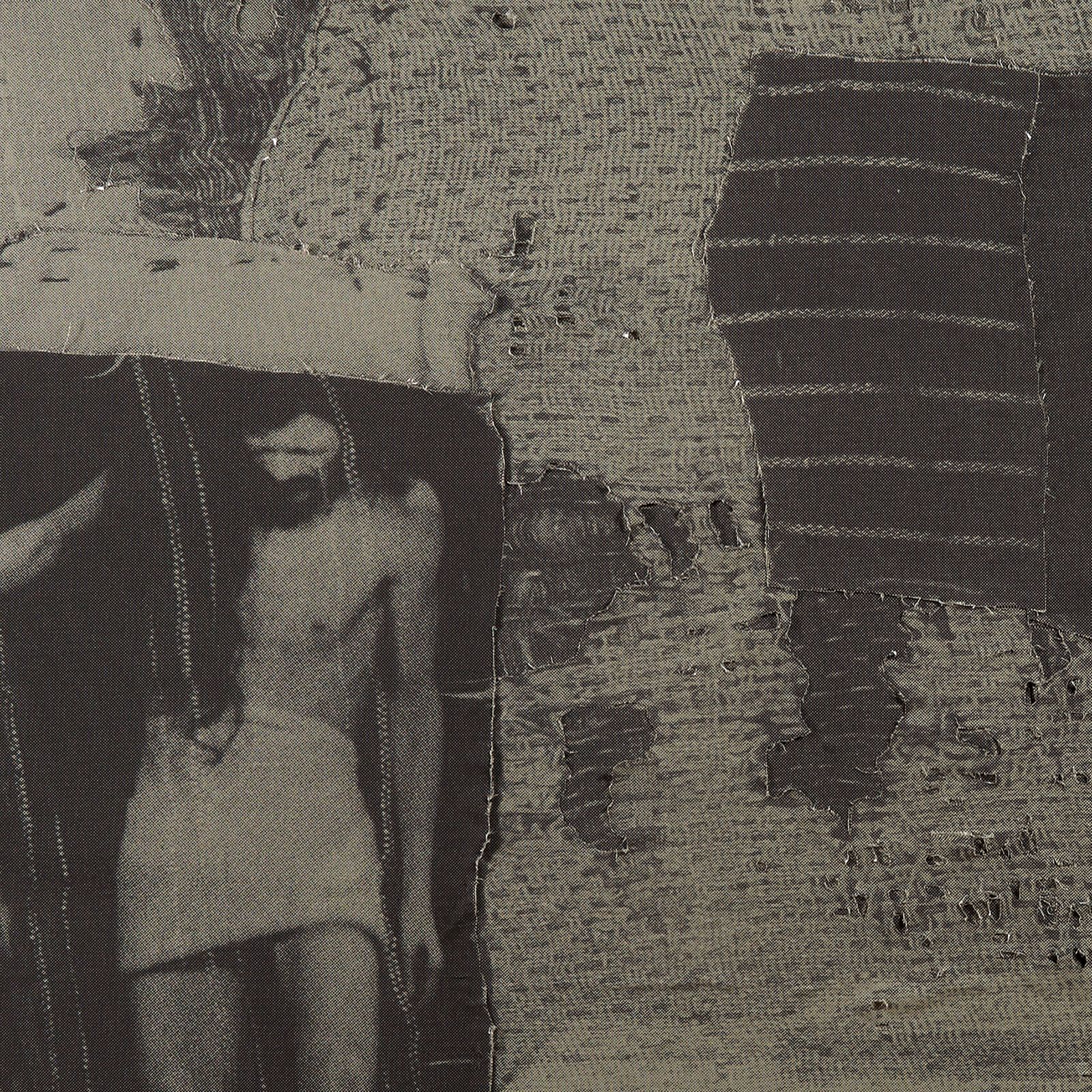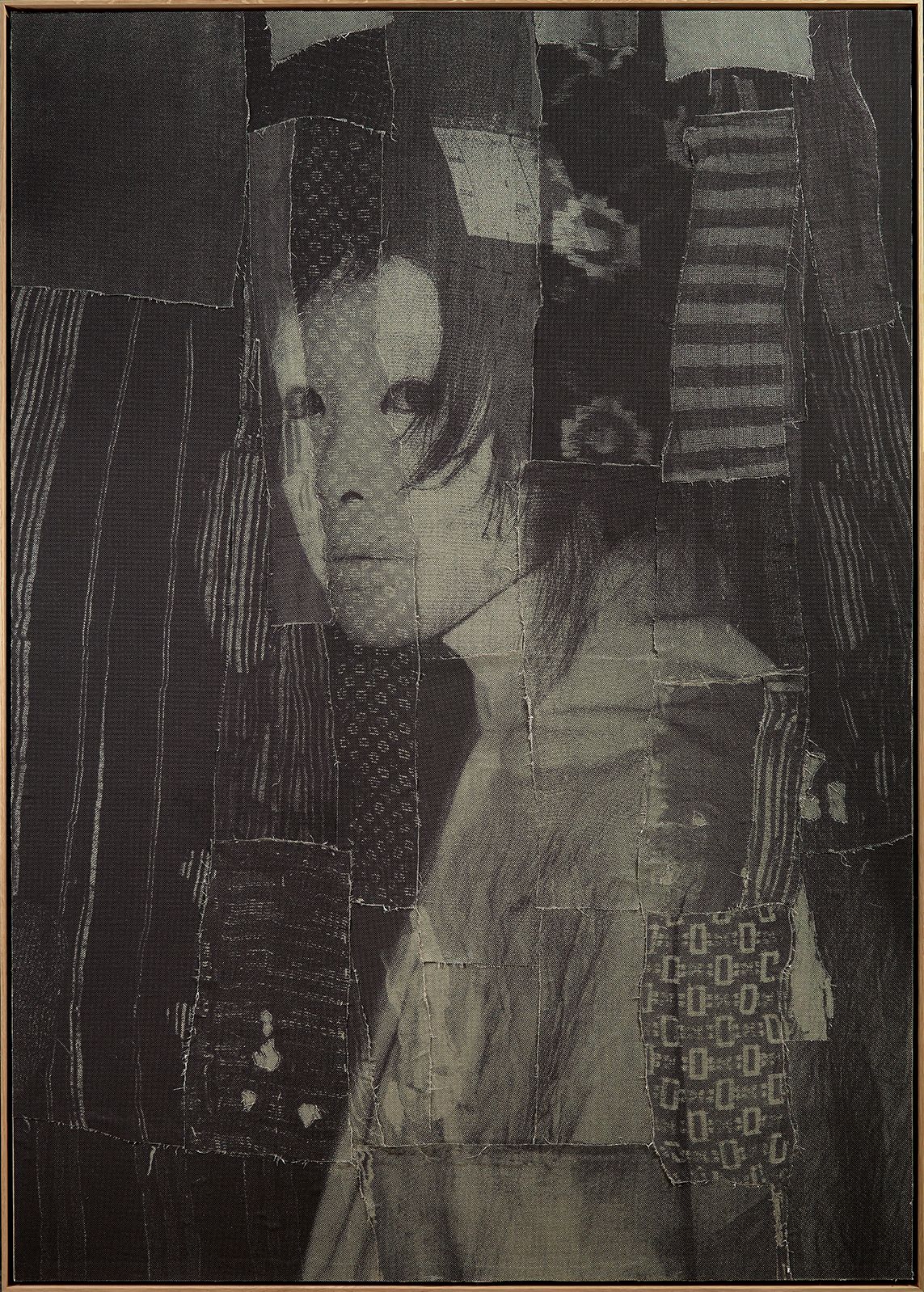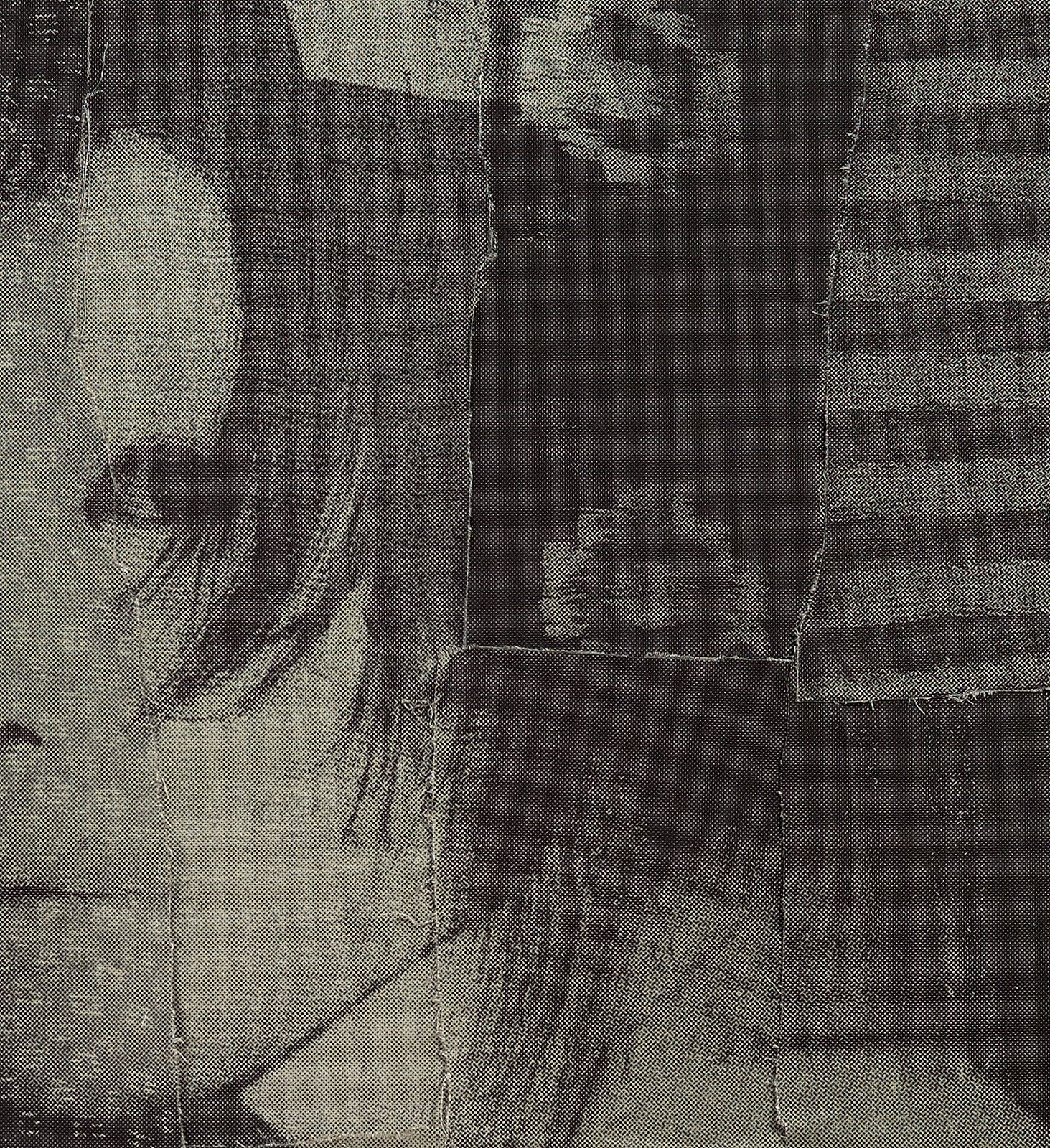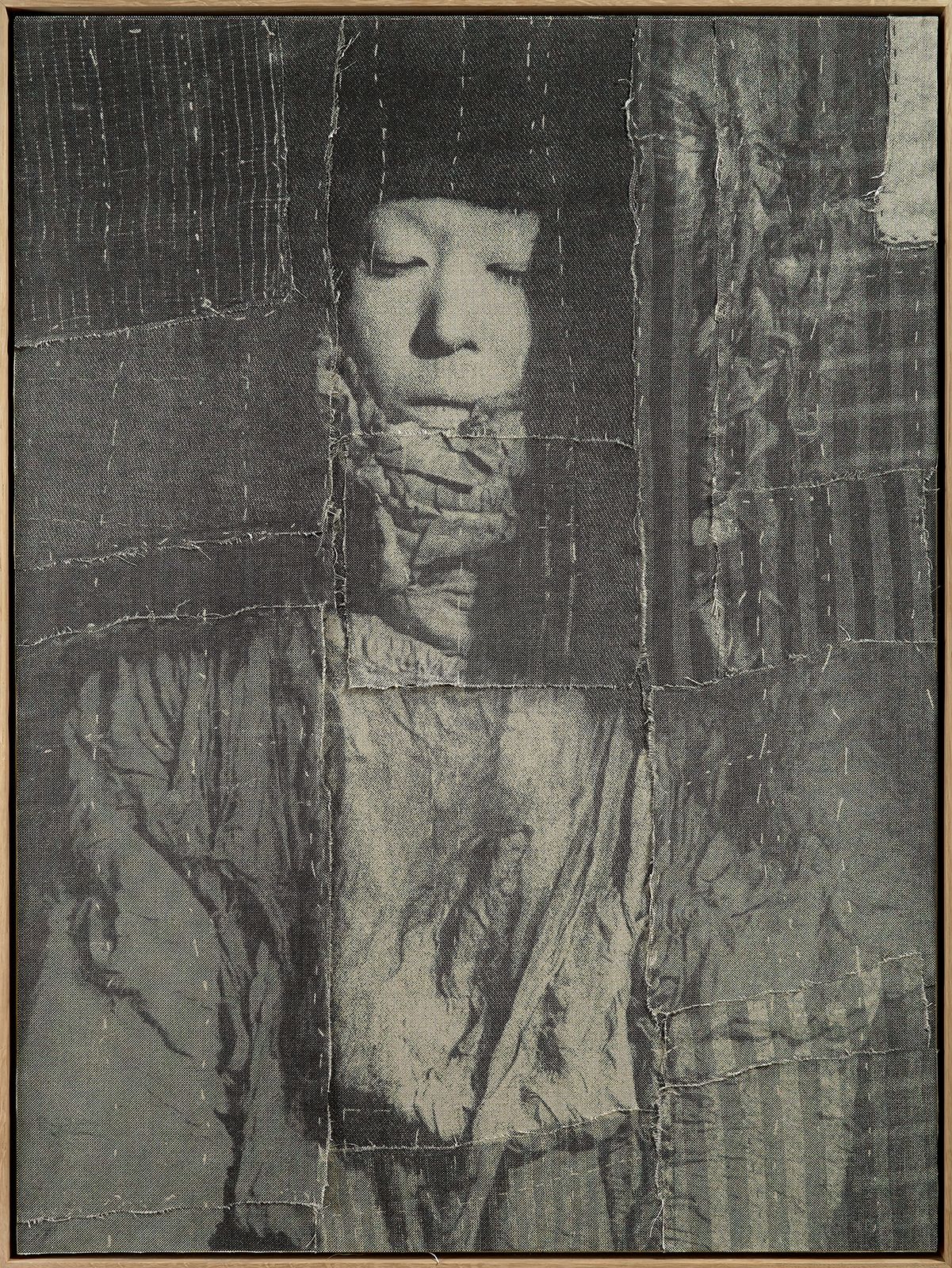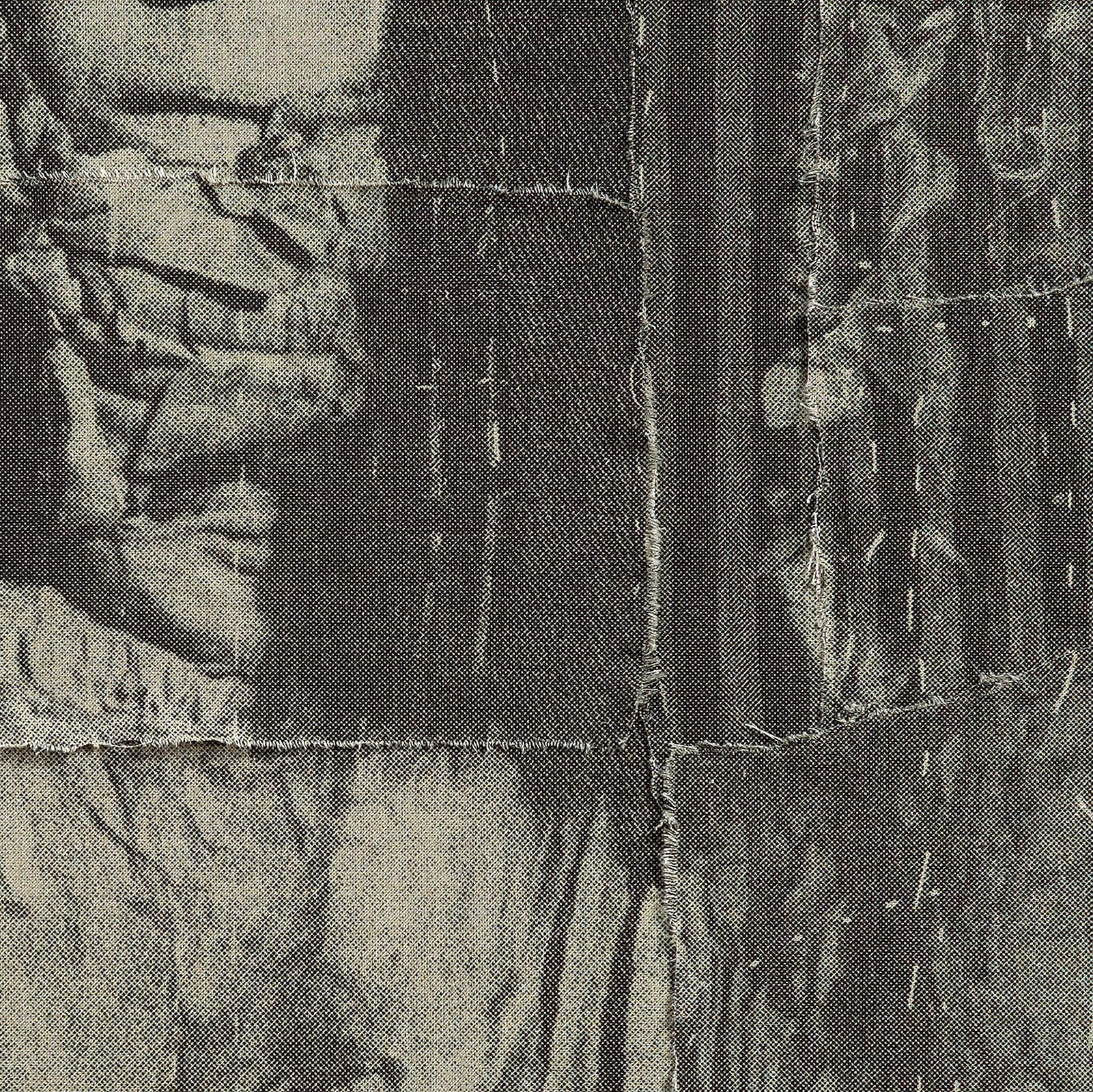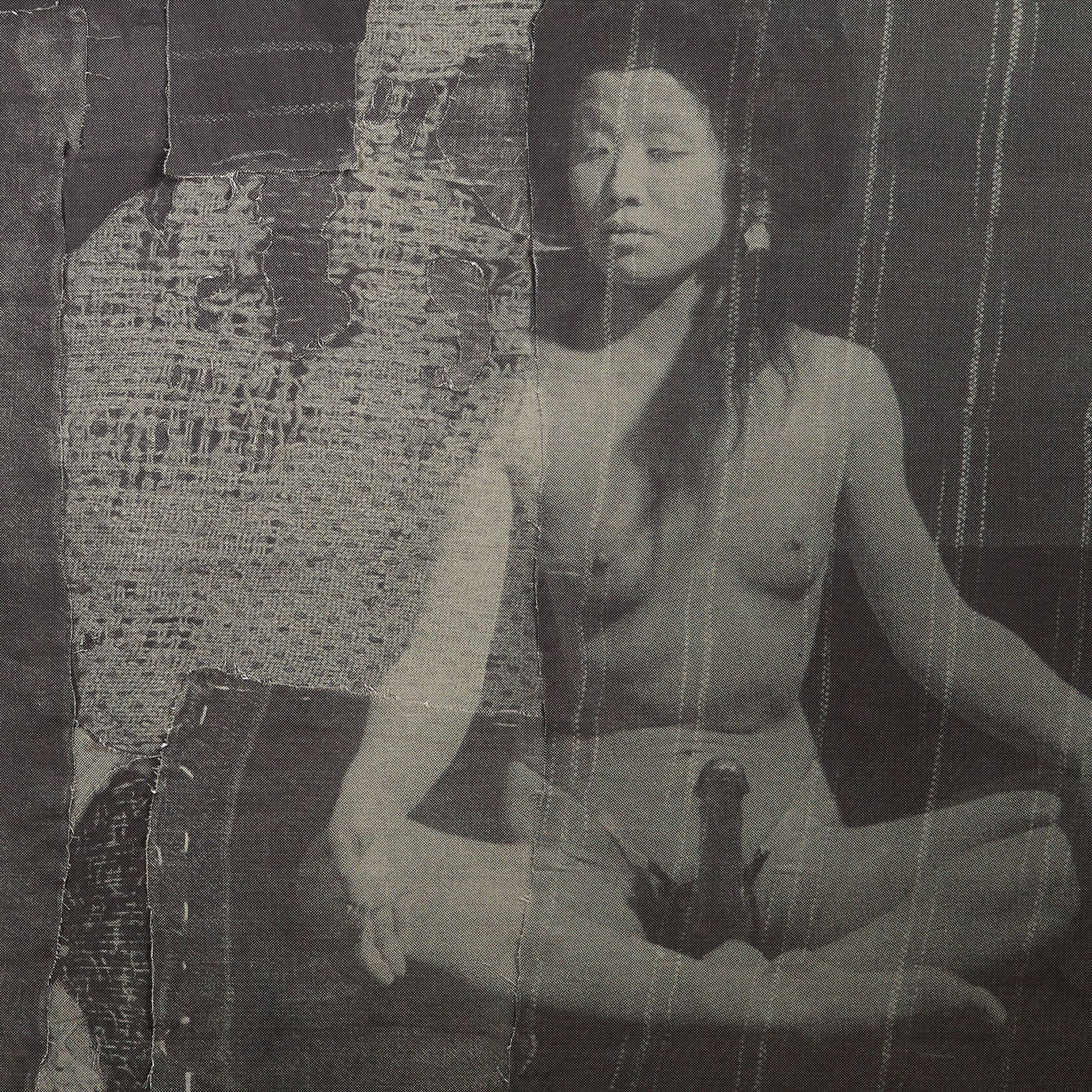David Noonan’s fourth solo exhibition at Foxy Production comprises a new series of silkscreened, collaged paintings. The works’ distressed surfaces and fractured subjects sustain a tension between abstraction and figuration, where images seem to subside into the materiality of the canvas. Printed in monochrome on raw linen, the works’ patterns and patchworking undermine the legibility of the scenes they project. Subjects appear reflective, caught in the midst of transformation or constraint. Each composition is fragmented; characters seem ethereal, losing their holding to the heft of the material they are rendered upon.
Noonan appropriates photographs of Butoh, the anarchic Japanese experimental theater. He transforms black-and-white production shots that document scenes and individual actors. While the original performances boldly confronted the social strictures of post-War Japan, Noonan’s images have an introspective quality. He translates the art form’s provocations into reflective moments of subtle emotion, overlaying reworked images with interpretations of the Japanese practice of Boro, the tradition of making bedding and clothing out of patches of rags.
Four works are hung, one to a wall, in the main space: three have transfixed women who are almost overwhelmed by Boro effects, while the fourth and largest has a man attached to a wall across from a group of actors in formation. The sparse hanging of the works enhances their resonance with one another, engendering – with their subjects’ nuanced expressions and sublimations within the synthesis of the patching and sewing – a contemplative mood.
In contrast the smaller, second space maintains a more acute atmosphere, where the subjects’ identities are veiled by Noonan’s abstracting strategies. On one wall the head of a naked, contorted, and symbolically aroused man is enveloped by textile sections; on the opposite the make-up on an actor’s face is indistinguishable from the work’s printing and collaging.
Noonan’s subjects are destabilized: their wigs, costumes, painted faces, poses, and the transformations, disruptions, and overlaying they endure, leave them unmoored, lost in a floating world. He produces a system of imprints where literal interpretations are frustrated, where only intimations and inflections can survive. His compositions cross a kind of psychic barrier into a landscape of archetypes that are decipherable, yet decontextualized. The works may incite reflection, memory, and fancy; yet intimations can dissolve as quickly as they form, as the viewer becomes subsumed by patterns, stitching, printing effects, and the weave of linen.
CREDITS:
Installation photography: Mark Woods.

